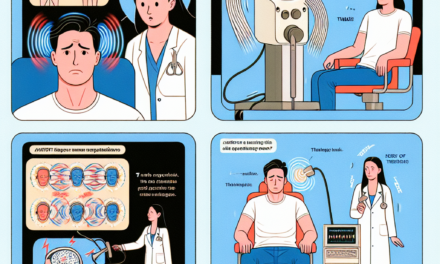Recent Expansions in Telehealth Services Across Australia and Additional Updates
Telehealth has emerged as a transformative force in the healthcare landscape, particularly in Australia, where vast distances and a diverse population present unique challenges. The COVID-19 pandemic accelerated the adoption of telehealth services, leading to significant expansions and innovations in the sector. This article explores the recent developments in telehealth across Australia, examining its impact, challenges, and future prospects.
1. The Rise of Telehealth in Australia
Telehealth refers to the delivery of healthcare services through digital communication technologies. In Australia, the rise of telehealth can be attributed to several factors, including geographical barriers, the need for accessible healthcare, and the recent global pandemic.
Before the pandemic, telehealth was already gaining traction, particularly in rural and remote areas where access to healthcare services was limited. According to the Australian Institute of Health and Welfare, approximately 7 million Australians live in rural and remote areas, making telehealth an essential service for these populations.
With the onset of COVID-19, telehealth services saw an unprecedented surge. The Australian government quickly adapted regulations to facilitate the use of telehealth, allowing healthcare providers to deliver services remotely without the need for in-person visits. This shift not only ensured continuity of care during lockdowns but also highlighted the potential of telehealth to improve healthcare access across the country.
- Government Support: The Australian government introduced several initiatives to support telehealth, including the expansion of Medicare rebates for telehealth consultations.
- Increased Adoption: A report from the Australian Digital Health Agency indicated that telehealth consultations increased from 1 million in 2019 to over 30 million in 2020.
- Technological Advancements: The rise of smartphones and high-speed internet has made telehealth more accessible to a broader audience.
As a result, telehealth has become a vital component of the Australian healthcare system, providing a model for future healthcare delivery that prioritizes accessibility and convenience.
2. Innovations in Telehealth Technology
The expansion of telehealth services in Australia has been accompanied by significant technological innovations that enhance the delivery of care. These advancements have made telehealth more effective, user-friendly, and secure.
One of the most notable innovations is the development of telehealth platforms that integrate various functionalities, such as video conferencing, electronic health records, and appointment scheduling. These platforms streamline the patient experience and improve communication between healthcare providers and patients.
For instance, platforms like Healthdirect and Telehealth Australia have gained popularity for their user-friendly interfaces and comprehensive services. They allow patients to consult with healthcare professionals from the comfort of their homes, reducing the need for travel and wait times.
- Artificial Intelligence: AI is being used to triage patients, analyze symptoms, and provide personalized health recommendations.
- Wearable Technology: Devices that monitor health metrics, such as heart rate and blood pressure, can transmit data to healthcare providers in real-time, enhancing remote monitoring capabilities.
- Data Security: With the rise of telehealth, ensuring the security of patient data has become paramount. Innovations in encryption and cybersecurity measures are being implemented to protect sensitive information.
These technological advancements not only improve the efficiency of telehealth services but also enhance patient engagement and satisfaction. As technology continues to evolve, the potential for telehealth to transform healthcare delivery in Australia is immense.
3. Telehealth Services for Mental Health
The mental health crisis in Australia has prompted a significant focus on telehealth services tailored to mental health care. The accessibility of mental health services has long been a concern, particularly in rural areas where mental health professionals are scarce.
Telehealth has emerged as a crucial solution, allowing individuals to access mental health support without the stigma or barriers associated with in-person visits. Services such as online therapy, counseling, and support groups have become increasingly popular.
According to a study published in the Australian & New Zealand Journal of Psychiatry, telehealth has been shown to be as effective as face-to-face therapy for various mental health conditions, including anxiety and depression. The study highlighted that patients often feel more comfortable discussing sensitive issues in a virtual setting.
- Accessibility: Telehealth has made mental health services more accessible to individuals who may have previously faced barriers, such as transportation issues or social anxiety.
- Variety of Services: A range of services, including cognitive behavioral therapy (CBT), mindfulness training, and medication management, are now available through telehealth platforms.
- Support Networks: Online support groups and forums provide individuals with a sense of community and connection, which is vital for mental health recovery.
As mental health continues to be a pressing issue in Australia, the expansion of telehealth services in this area is likely to play a crucial role in improving access to care and supporting individuals in need.
4. Challenges and Limitations of Telehealth
Despite the numerous benefits of telehealth, several challenges and limitations must be addressed to ensure its continued success and effectiveness in Australia.
One of the primary challenges is the digital divide, which refers to the gap between individuals who have access to digital technologies and those who do not. In rural and remote areas, limited internet connectivity can hinder the effectiveness of telehealth services. According to the Australian Bureau of Statistics, approximately 15% of Australians do not have access to reliable internet, which can limit their ability to engage with telehealth services.
Additionally, there are concerns regarding the quality of care delivered through telehealth. While many studies have shown that telehealth can be as effective as in-person visits, some healthcare providers worry that certain conditions may require physical examinations that cannot be conducted remotely.
- Regulatory Challenges: The rapid expansion of telehealth has outpaced regulatory frameworks, leading to inconsistencies in service delivery and reimbursement policies.
- Patient Engagement: Some patients may struggle with technology or feel uncomfortable using telehealth platforms, which can impact their willingness to seek care.
- Privacy Concerns: The security of patient data remains a significant concern, with potential risks associated with data breaches and unauthorized access.
Addressing these challenges will be crucial for the sustainable growth of telehealth services in Australia. Stakeholders must work collaboratively to develop solutions that enhance accessibility, ensure quality care, and protect patient privacy.
5. The Future of Telehealth in Australia
The future of telehealth in Australia looks promising, with ongoing innovations and expansions expected to shape the healthcare landscape. As the demand for accessible healthcare continues to grow, telehealth is likely to play an increasingly central role in service delivery.
One of the key trends is the integration of telehealth with traditional healthcare services. Hybrid models that combine in-person visits with telehealth consultations are becoming more common, allowing for a more comprehensive approach to patient care. This model can enhance patient satisfaction while ensuring that healthcare providers can address complex cases that may require physical examinations.
Furthermore, the Australian government is expected to continue supporting telehealth initiatives through funding and policy reforms. The recent introduction of the Telehealth Expansion Program aims to enhance telehealth services for specific populations, including Indigenous Australians and those with chronic conditions.
- Increased Investment: As telehealth proves its value, investment in technology and infrastructure is likely to increase, leading to further advancements in service delivery.
- Focus on Preventive Care: Telehealth can facilitate preventive care by enabling regular check-ins and monitoring for at-risk populations, ultimately reducing healthcare costs.
- Global Collaboration: Australia can learn from international telehealth models, adopting best practices and innovations from other countries to enhance its own services.
In conclusion, the recent expansions in telehealth services across Australia represent a significant shift in the healthcare landscape. While challenges remain, the potential for telehealth to improve access to care, enhance patient engagement, and support mental health is immense. As technology continues to evolve and government support persists, telehealth is poised to become an integral part of the Australian healthcare system, ensuring that all Australians have access to the care they need, regardless of their location.
Conclusion
The expansion of telehealth services in Australia has been a remarkable development in the healthcare sector, driven by necessity and innovation. From its rise during the COVID-19 pandemic to the ongoing advancements in technology and service delivery, telehealth has proven to be a vital resource for improving healthcare access and outcomes.
As we look to the future, it is essential to address the challenges that accompany this rapid expansion, including the digital divide, regulatory hurdles, and privacy concerns. By fostering collaboration among stakeholders and investing in technology and infrastructure, Australia can continue to enhance its telehealth services, ensuring that all citizens receive the care they need.
Ultimately, the journey of telehealth in Australia is just beginning. With continued support and innovation, telehealth has the potential to revolutionize healthcare delivery, making it more accessible, efficient, and patient-centered than ever before.





